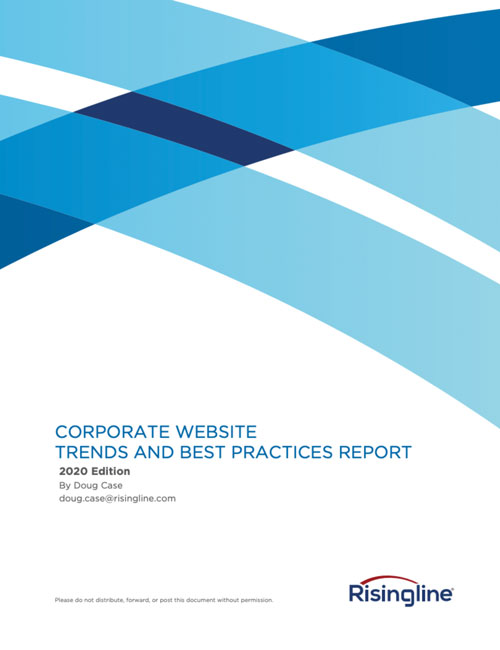Marketing, design, and technical resources for making your digital and print communications more effective.
November 1st, 2020
 This report provides managers with a high-level overview of key web development best practices and trends so they 1) are better equipped to make informed decisions, 2) are aware of available tools and resources, and 3) gain an understanding of current requirements, risks, and costs associated with their website.
This report provides managers with a high-level overview of key web development best practices and trends so they 1) are better equipped to make informed decisions, 2) are aware of available tools and resources, and 3) gain an understanding of current requirements, risks, and costs associated with their website.
Download the Report
The topics covered include:
-
Strategy and Goals
Understanding the effectiveness of a website is dependent upon the quality of the comprehensive marketing plan in which it exists.
-
Content and Messaging
The preeminence of content or achieving your website goals.
-
User-Centered Design
Developing your organization’s website from your target audience’s perspective.
-
Graphic Design Principles
An overview of the fundamental principles for utilizing design to provide effectiveness and credibility to your message.
-
Web Design Trends and Best Practices
A summary of current web design and layout trends and their advantages.
-
Website Security
An overview of the increased risk of hacking and the major factors that can affect your website’s security.
-
Website Accessibility (Section 508 and WCAG 2.1 AA)
Understanding the rapidly evolving requirements for website accessibility.
-
Website Deployment Options
The pros and cons of professionally managed websites compared to user managed content management systems (CMS).
-
Search Engine Marketing (SEM)
A primer on the components of SEM including organic SEO and paid SEM.
Posted in Marketing Communication, Web Accessibility, Web Development, Web Security | Comments Off on Web Development Trends and Best Practices Report
January 1st, 2018
Web accessibility refers to providing websites that are usable by individuals with disabilities. Approximately 10% of the population has a disability that affects computer use. Website accessibility primarily addresses disabilities related to vision, motor skills, mobility, hearing, and seizures.
Web accessibility is on track to potentially revolutionize how businesses and organizations provide online assets both internally and to the public, and is something every organization should be aware of regarding both their Internet and intranet applications.
Modern commercial building construction is required by law to include accessibility features such as wheelchair ramps, lower height drinking fountains, and minimum clearance specs for restrooms. If they do not provide these features they will exclude a portion of the population who is disabled from the ability to equally access and utilize the services housed in those buildings. In addition, they may open themselves up to legal action and may be fined by the Department of Justice (DOJ) or sued by private parties under the provisions of the Americans with Disabilities Act (ADA) and/or other laws that pertain to accessibility.
In the same manner that the commercial construction industry was changed by the requirements of the ADA the digital workspace is being transformed now.
Web Accessibility Laws
Until recently, the standards for web accessibility were not clearly defined and the DOJ did not actively enforce standards. There has been a significant shift in both the refinement of web accessibility standards and the active enforcement of such standards by the DOJ. Because of the DOJ’s active enforcement, private litigation has increased.
The current standards to which organizations are being held accountable are WCAG 2.0 AA. You may have heard of Section 508 web accessibility standards, which were less comprehensive than WCAG. WCAG 2.0 AA standards are being adopted as Section 508 requirements.
Accessibility standards and enforcement of those standards is still a developing area; however there is no doubt that any business or organization website should take measures now to ensure their website is accessible according to WCAG 2.0 AA.
Tags: Web accessibility
Posted in Web Accessibility | Comments Off on WCAG and Section 508 Website Accessibility
 This report provides managers with a high-level overview of key web development best practices and trends so they 1) are better equipped to make informed decisions, 2) are aware of available tools and resources, and 3) gain an understanding of current requirements, risks, and costs associated with their website.
This report provides managers with a high-level overview of key web development best practices and trends so they 1) are better equipped to make informed decisions, 2) are aware of available tools and resources, and 3) gain an understanding of current requirements, risks, and costs associated with their website.